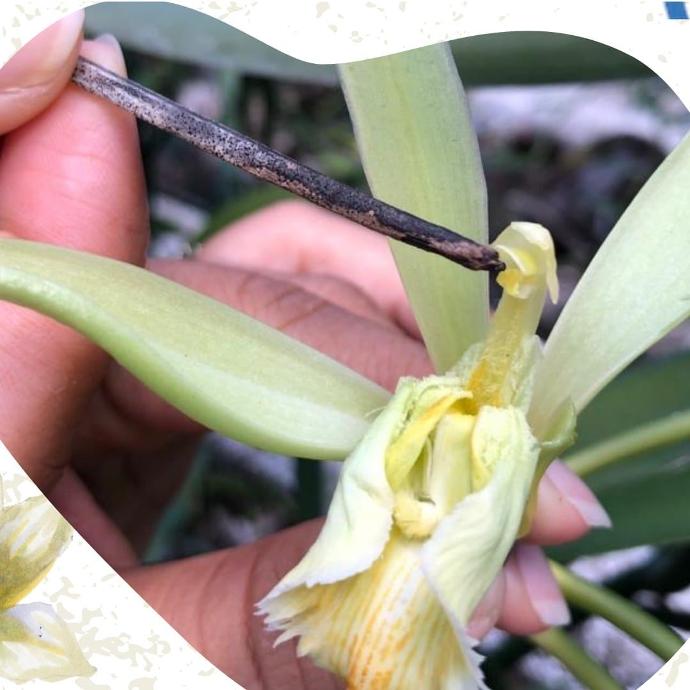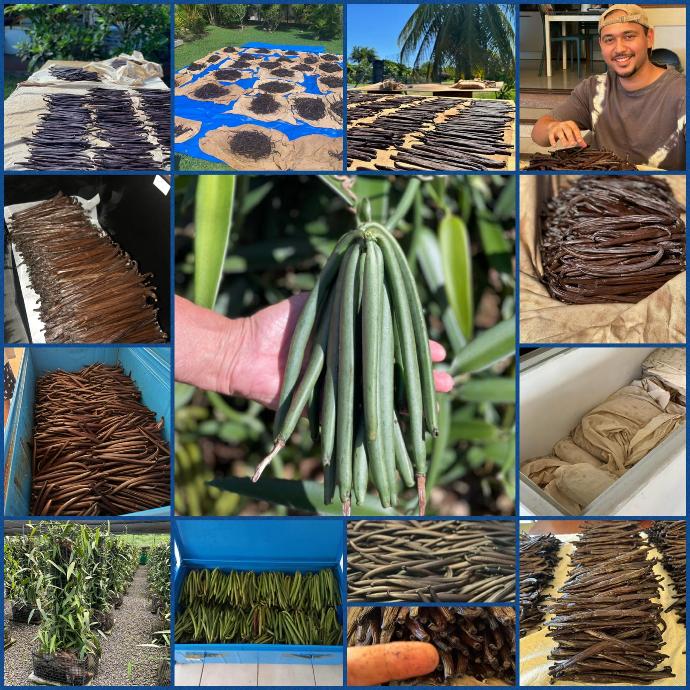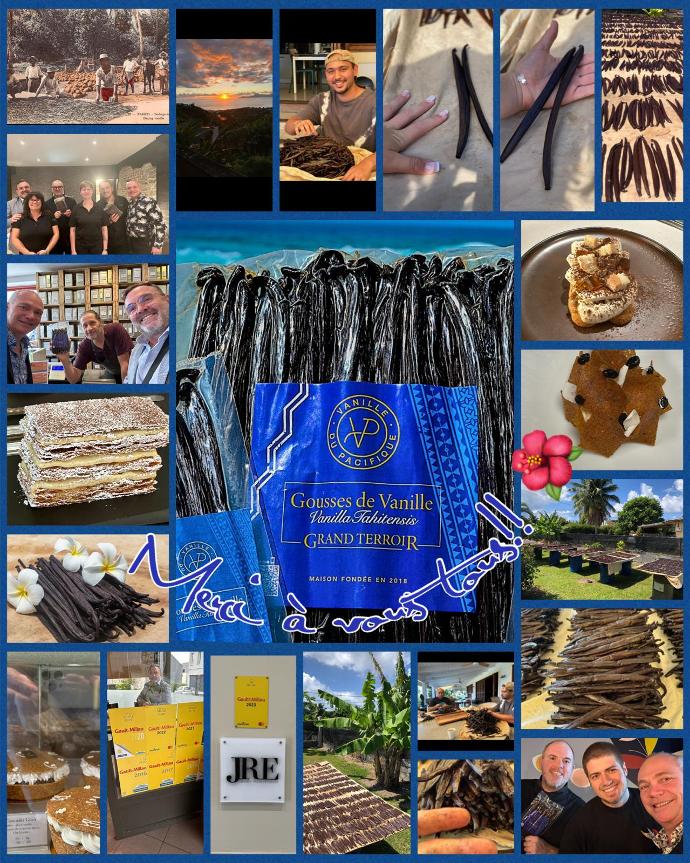Our Vanilla
Vanilla Tahitensis: Tahitian vanilla
Our vanilla benefits from ideal growing conditions. Our warm and humid climate gives it all the qualities to become a high-end product, rich in flavors. Its shiny and supple texture and the aromatic content of its pods are the result of a complex alchemy: its genetic characteristics but also the nature of our soils, our climate and the expertise of our Polynesian growers and preparers.

A story of vanilla
Vanilla comprises 107 tropical species, of which around thirty are aromatic. Only three species are cultivated: Vanilla Planifolia (Bourbon vanilla, approximately 97% of world production), Vanilla Pompona (vanillon, approximately 1% of world production) and Vanilla Tahitensis (Tahitian vanilla, approximately 2% of world production).
Vanilla is not endemic to French Polynesia. It is assumed that Vanilla Planifolia plants from the Philippines were first introduced in 1848 by Admiral Hamelin. Another introduction was made later in 1850 by Rear Admiral Bonard, this time of Vanilla Planifolia from European botanical gardens and Vanilla Pompona from the Antilles. Finally, a third introduction, by Commander Pierre, in 1878, with plants from Mexico.
The species Vanilla Tahitensis is said to be a natural hybridization between Vanilla Planifolia and Vanilla Odorata (a species from Mexico) and has been recognized as its own species since 1933.
It is believed that Vanilla Planifolia plants from the Philippines were first introduced in 1848 by Admiral Hamelin.
Another introduction would be made later in 1850 by Rear Admiral Bonard, this time of Planifolia vanilla, from European botanical gardens and Pompona vanilla from the Antilles.
It is believed that Vanilla Planifolia plants from the Philippines were first introduced in 1848 by Admiral Hamelin.
Vanilla Tahitensis
Tahitian vanilla is recognized as its own species.
A rare spice......
Vanilla is a very temperamental plant and needs to be grown under shade, usually in a greenhouse, to best control humidity and temperature.
It takes at least three years for the plant to produce its first flowers. The cultivation and preparation process takes more than a year and is subject to bad weather.
In French Polynesia, the orchid must be pollinated by hand. This marriage of flowers takes place early in the morning when it is still cool. Our growers take care of the cuttings, we check or assist in the correct attachment and make sure to fold the vine so that the pods can be at eye level to be worked on pleasantly afterwards. The pods do not reach maturity until 10 months later.
Tahitian vanilla requires a longer preparation. Unlike its cousins Planifolia and Pompona, the Tahitensis species produces an indehiscent fruit: it does not explode when ripe and does not need to be picked in advance. We vanilla growers harvest when the fruits have reached maturity, following a calendar and size and color criteria established by a control commission.


... cultivated with passion!
After harvesting, the pods are placed in the shade in chests until completely brown. Then come several weeks of drying (1 to 3 months) during which the vanilla spends 2 to 3 hours per day in the sun and is then put back in the chests to lose almost half of its moisture content through transpiration.
The pods are then wrapped in cotton sheets and placed again in the dark in chests. They lose water through sweating and release oil, making them supple and shiny. The pods are also regularly massaged to evenly distribute the seeds contained.
Finally, comes the refining period (air and shade drying), to homogenize the batches, complete the drying and stabilize their aroma.
It is a long process that is subject to the weather and requires a certain amount of know-how. It is a job that requires a lot of patience and passion.
Tahitensis vanilla is prized for its more pronounced aroma, with a longer and fleshier pod. The vanilla we mainly produce and market is the Haapape variety, a premium vanilla that produces longer and fatter pods with notes of anise, licorice, and slightly chocolate.
1933
Tahitian vanilla is recognized as its own species
10
Month of cultivation
6 à 9
Month of preparation
2%
From global production
Our history
Pacific Vanilla is the fruit of a love of family, of our country, French Polynesia and of taste!
We work with vanilla growers and vanilla preparers on Tahiti, Raiatea and Taha'a to produce high-end quality vanilla. Vanilla is very much part of Polynesian culture and we are proud to be able to support our local workforce.
Customer relations are very important to us. The Polynesian population is known for its warm welcome and this is a value to which we are attached. We love being able to meet our customers and see the interest in our product, know their projects and their inspirations.
